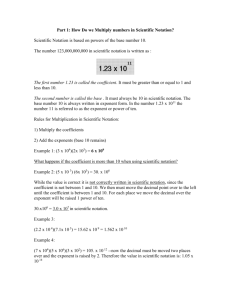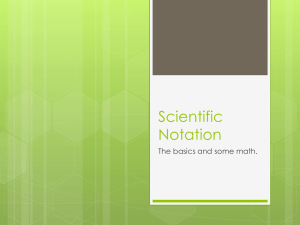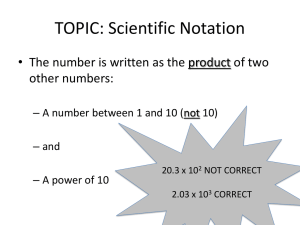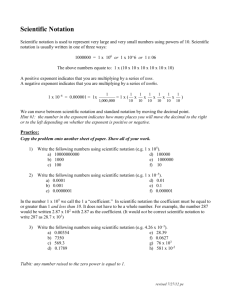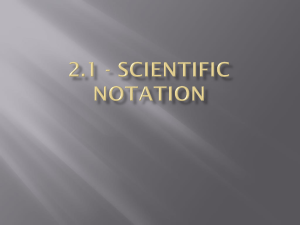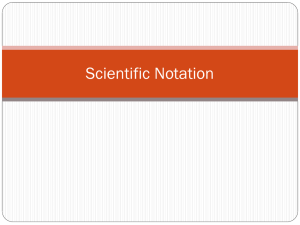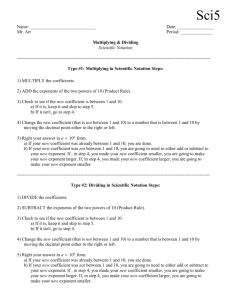scientific notation notes wed 9
advertisement
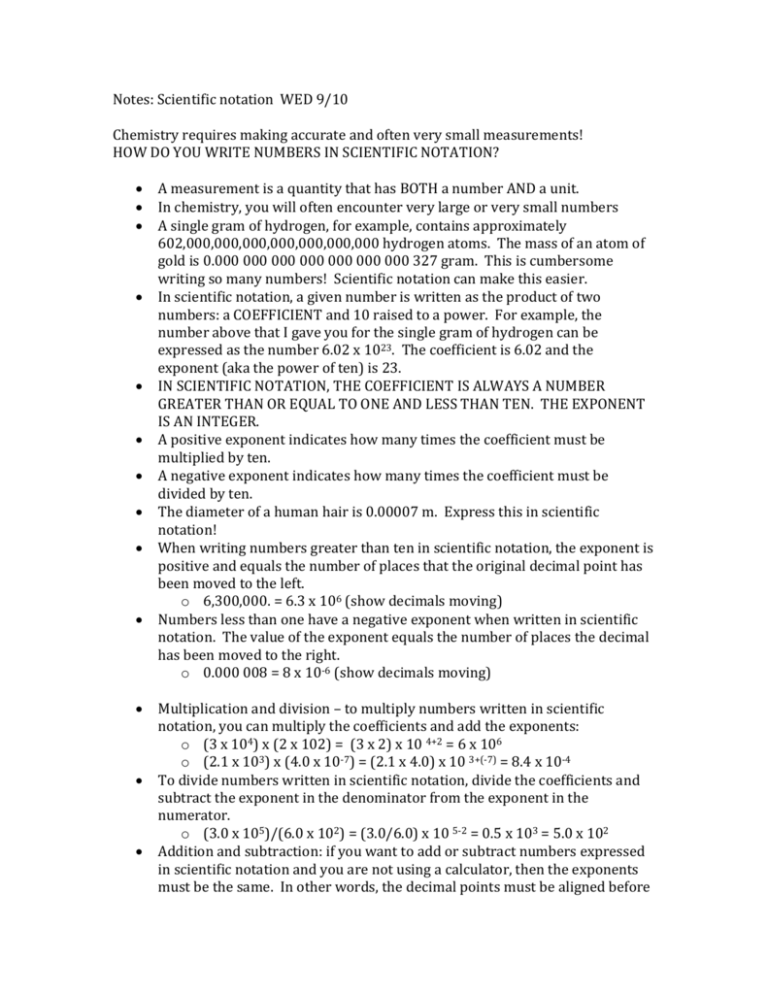
Notes: Scientific notation WED 9/10 Chemistry requires making accurate and often very small measurements! HOW DO YOU WRITE NUMBERS IN SCIENTIFIC NOTATION? A measurement is a quantity that has BOTH a number AND a unit. In chemistry, you will often encounter very large or very small numbers A single gram of hydrogen, for example, contains approximately 602,000,000,000,000,000,000,000 hydrogen atoms. The mass of an atom of gold is 0.000 000 000 000 000 000 000 327 gram. This is cumbersome writing so many numbers! Scientific notation can make this easier. In scientific notation, a given number is written as the product of two numbers: a COEFFICIENT and 10 raised to a power. For example, the number above that I gave you for the single gram of hydrogen can be expressed as the number 6.02 x 1023. The coefficient is 6.02 and the exponent (aka the power of ten) is 23. IN SCIENTIFIC NOTATION, THE COEFFICIENT IS ALWAYS A NUMBER GREATER THAN OR EQUAL TO ONE AND LESS THAN TEN. THE EXPONENT IS AN INTEGER. A positive exponent indicates how many times the coefficient must be multiplied by ten. A negative exponent indicates how many times the coefficient must be divided by ten. The diameter of a human hair is 0.00007 m. Express this in scientific notation! When writing numbers greater than ten in scientific notation, the exponent is positive and equals the number of places that the original decimal point has been moved to the left. o 6,300,000. = 6.3 x 106 (show decimals moving) Numbers less than one have a negative exponent when written in scientific notation. The value of the exponent equals the number of places the decimal has been moved to the right. o 0.000 008 = 8 x 10-6 (show decimals moving) Multiplication and division – to multiply numbers written in scientific notation, you can multiply the coefficients and add the exponents: o (3 x 104) x (2 x 102) = (3 x 2) x 10 4+2 = 6 x 106 o (2.1 x 103) x (4.0 x 10-7) = (2.1 x 4.0) x 10 3+(-7) = 8.4 x 10-4 To divide numbers written in scientific notation, divide the coefficients and subtract the exponent in the denominator from the exponent in the numerator. o (3.0 x 105)/(6.0 x 102) = (3.0/6.0) x 10 5-2 = 0.5 x 103 = 5.0 x 102 Addition and subtraction: if you want to add or subtract numbers expressed in scientific notation and you are not using a calculator, then the exponents must be the same. In other words, the decimal points must be aligned before you add or subtract the numbers. For example, when adding 5.4 x 103 and 8.0 x 102, first rewrite the second number so that the exponent is a 3. Then add the numbers! o 5.4 x 103 and 8.0 x 102 = 5.4 x 103 + 0.8 x 103 = (5.4 + 0.80) x 103 o = 6.2 x 103
